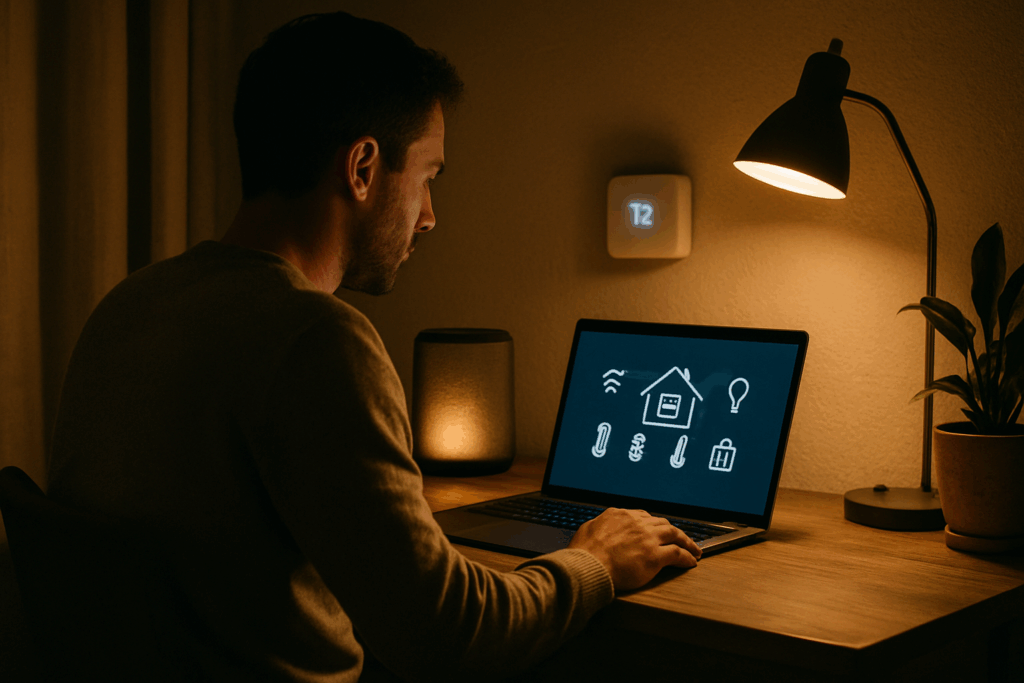The Smart Home Revolution: Not Just Hype
“Smart home” used to mean a house tricked out with expensive tech—automated lights, remote-controlled thermostats, maybe a fridge that talks back. Now, it’s much more democratic. A smart home today is any living space outfitted with internet-connected devices that automate everyday tasks or improve how a home functions. We’re talking smart plugs, security cams, voice assistants, sensor-triggered lights, and more. You don’t need a mansion or a Silicon Valley paycheck to join the club.
Adoption is growing at different speeds around the world. North America and Western Europe lead in overall setup density, but emerging markets in Asia and Latin America are catching up fast, especially with mobile-first integrations. The growth is driven by falling hardware prices, better app ecosystems, and a big shift toward renter-friendly devices—think peel-and-stick sensors and app-controlled bulbs you can set up in five minutes.
The big takeaway? Smart living is no longer a niche flex—it’s a practical upgrade for the masses. Whether it’s saving energy, boosting home security, or just not having to get off the couch to turn off the lights, smart home tech is becoming part of the standard domestic toolkit. The fanciest setups still exist, sure, but the floor for entry keeps dropping—and every household is a candidate.
Core Pillars of Smart Home Tech
Smart homes aren’t just about fancy gadgets—they’re about making everyday routines frictionless. At the heart of this movement are four key pillars that are pushing homes into the future, without needing a tech degree to operate them.
Automation is doing heavy lifting behind the scenes. Lights that follow you from room to room, thermostats that know when you’re out, and blinds that adjust to the sun’s angle aren’t science fiction—they’re the new baseline. Set-it-and-forget-it is no longer a luxury, it’s built into the structure.
Voice Control continues to get smarter. Alexa, Google Assistant, and Siri are evolving from simple command hubs into more conversational assistants. They know which light you mean when you say “turn that one off,” and they’re starting to sync seamlessly with a growing number of devices—no more yelling at the air three times to get something done.
Security Enhancements are scaling fast, too. Real-time alerts from doorbell cams and smart locks that track who comes in and out mean homeowners don’t need to second-guess. Whether it’s package theft or unexpected movement in the driveway, the home is watching when you can’t.
Energy Efficiency ties it all together. Smart thermostats adjust based on learning habits, and connected appliances stagger usage to reduce peak-hour drain. The goal is simple: lower bills without sacrificing comfort. The tech turns off what you forget, trims waste, and stretches every dollar without you lifting a finger.
Together, these upgrades turn homes into systems that anticipate rather than react—quietly working in the background so people don’t have to.
Integrating AI and IoT: A Game Changer
AI is turning smart homes into adaptive homes. Instead of just responding to voice commands or manual triggers, systems are learning user patterns—when you wake up, how warm you like the kitchen in the morning, which lights you prefer at night. This means your home adjusts before you even ask. Curtains close as the sun hits a certain angle, music fades in when you start your workout, and thermostats tweak themselves based on weather forecasts and your schedule.
On the backend, IoT devices are finally getting better at talking to each other. The dishwasher sends an alert to the energy management system to avoid running during peak hours. Your fridge can flag its own maintenance issues to a service dashboard before anything breaks. These aren’t gimmicks—they’re signals of a shift toward predictive living. Homes are getting proactive instead of reactive.
At the center of all this is the battle between central hubs (like Google Home, Apple HomeKit, or Samsung SmartThings) and device-specific apps. Central hubs offer clean integration and automation with less app clutter, but some devices still gatekeep certain features behind their own platforms. Users are stuck juggling both—for now. As standards tighten and ecosystems become more open, expect smoother orchestration across the board.
What this means for homeowners: less micromanaging, fewer surprises, and more of your house doing the thinking for you.
Sustainability & Smart Design
Smart homes are quietly becoming low-key environmental heroes. Energy waste? Less of it. Connected thermostats tweak temperatures room by room. Lights turn off as you leave. Appliances learn your habits and shift usage to off-peak hours without you lifting a finger. All of that adds up to trimmed bills and fewer emissions.
Water usage is next. Leak detection sensors now alert homeowners before damage starts—and they’re getting smarter. Some systems will even shut off valves automatically. Meanwhile, low-flow fixtures and efficient irrigation schedules can be dialed in via app. Control, without micromanaging.
But it’s not just gadgets. Builders are pairing intelligent systems with smarter materials. We’re seeing more homes use recycled composites, low-VOC adhesives, and insulation that adapts to temperature swings. The result? Homes that don’t just work hard—they work smart and waste less.
For a closer look at where sustainable building materials are headed, check out how sustainable materials are shaping home projects.
Challenges to Watch
Smart homes are great—until they’re not. The more devices talk to each other, the more data they collect. And that raises big questions about privacy. Who owns the data your smart fridge pulls? What happens when your doorbell camera footage gets uploaded to a third-party server? As homes get smarter, the data stakes rise. Users are pushing back, demanding transparency around what’s collected and how it’s stored.
Another pain point: brand lock-in. A smart thermostat might work well with one app but refuse to play nicely with your other devices unless they’re from the same company. Ecosystems clash. Trying to bridge devices from different brands can turn into a frustrating tangle of cables, apps, and firmware updates.
Then there’s the money. Upfront costs for outfitting a home with smart devices vary wildly. Yes, long-term savings on energy and insurance can be real, but they’re not immediate. For many, the break-even point feels too far off to justify dropping four figures on automation.
And finally—tech fatigue. Managing a dozen connected devices can feel like a part-time job. When your lightbulbs need firmware updates and your smart blinds stop syncing, convenience starts looking like a burden. There’s a line between useful automation and overengineered chaos. Smart homes that work best strike a balance: function over flash, control without overload.
What’s Ahead: The Future of Smart Homes
What to Expect in the Next 3–5 Years
The next few years will see smart homes transitioning from novelty to necessity. As consumer expectations rise and technology matures, the line between digital and physical living will continue to blur.
Here’s what’s on the horizon:
– Greater interoperability between devices and brands
– Affordability improvements making smart tech mainstream
– Smarter automation powered by real-world context
– Deeper integration with health, wellness, and lifestyle tracking
The Rise of Ambient Computing
Ambient computing will redefine how we think about interaction. Instead of issuing commands, your home will sense your habits and act accordingly.
– Context-aware systems use motion, voice tone, lighting, and habits to anticipate your needs
– Devices will shift from being reactive to being proactive
– Your environment becomes intuitive—adjusting without explicit input
How 5G and Edge Computing Are Accelerating Everything
The rollout of 5G and adoption of edge computing infrastructure are game changers for smart home innovation.
– 5G brings ultra-fast, low-latency connectivity—ideal for real-time home automation and video processing
– Edge computing processes data locally, reducing lag and increasing privacy
– Together, they enable more powerful, responsive, and secure smart home ecosystems
Final Word: Build for Comfort, Optimize for Function
Smart home evolution isn’t just about having the latest tech—it’s about creating a frictionless living experience. The best systems are those that enhance comfort, improve efficiency, and fade into the background.
– Focus on tech that serves your real lifestyle needs
– Prioritize seamless integration over flashy features
– Let comfort lead, and let technology follow
As innovations roll out, remember: a truly smart home isn’t the most complex—it’s the most intuitive.




